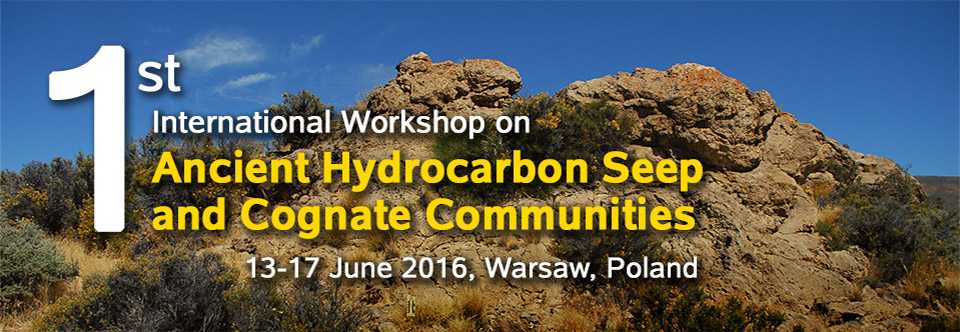
ON THE USE OF Nd ISOTOPES IN STUDIES OF SEEP AND VENT CARBONATES:
PROSPECTS, LIMITATIONS, AND CHALLENGES
Michał JAKUBOWICZ1, Jolanta DOPIERALSKA2, and Zdzisław BEŁKA3
1Institute of Geoecology and Geoinformation, Adam Mickiewicz University, Poznań, Poland; 2Poznań Science and Technology Park, Adam Mickiewicz University Foundation, Poznań, Poland; 3Isotope Laboratory, Adam Mickiewicz University, Poznań, Poland.
Corresponding author: mjakub@amu.edu.pl
Owing to a relatively short residence time of Nd in seawater, Nd isotope ratios are one of the most
widely used tools of reconstructing water circulation patterns in both modern and past oceans. The
temporal and spatial changes in Nd isotopic composition of the fluid phase reflect interactions between
water and various mineral phases, which may differ drastically in their εNd values depending
upon their depleted mantle- or old continental crust-derived character. For the same reason,
Nd isotope signals, measured either directly in the solutions or in authigenic minerals, provide potentially
a sensitive proxy of fluid origin and migration pathways in subseafloor plumbing systems
of submarine fluid emissions. The most obvious signatures of subseafloor fluid-rock interactions
can be observed in solutions discharged at hot-temperature hydrothermal vents, in which high εNd
values originate as a result of alteration of mafic, mantle-derived, 143Nd-enriched crystalline rocks.
For low- to moderate-temperature fluid discharges, such as methane seeps, groundwater seeps
and some sedimented hydrothermal vents, interpretation of the Nd isotope data is often more
difficult due to a significant extent of mixing of the deep-seated fluids and ambient seawater, and,
commonly, a similar Nd isotopic composition of the sediments and local seawater. In such cases,
peculiar geological configurations, resulting in a distinct contrast between the isotopic signals of
ambient seawater and the basement rocks, may be needed for the εNd values of the emitted fluids
to be readily detectable in authigenic precipitates. Such conditions may be present, for instance,
where the seeping solutions pass through mafic, depleted-mantle derived magmatic rocks on their
way to the seafloor. The 143Nd-enriched magmatic rocks can be present either directly in the local
basement, or be exposed subaerally, being drained by rainwater subsequently discharged at
near-shore seeps. Given the very distinct εNd values of the mantle-derived crustal components, in
such cases changes in εNd values of seeping fluids can be expected to be relatively common, and,
indeed, peculiar Nd isotope signals of fluids or authigenic precipitates have been reported in a few
case studies (e.g., Jakubowicz et al., 2015). Further research is needed to better resolve the questions
of potential applicability and limitations of Nd isotopes to studies of fluid migration pathways
at seeps and sedimented vents. Ideally, each case study should be supplemented by additional
analyses, including C, O, Sr isotope and/or trace element measurements.
References
Jakubowicz, M, Dopieralska, J, and Belka, Z 2015. Tracing the origin and composition of fluids at an ancient hydrocarbon seep (Hollard Mound, Middle Devonian, Morocco): A Nd, REE and stable isotope study. Geochimica et Cosmochimica Acta 156: 50–74.
